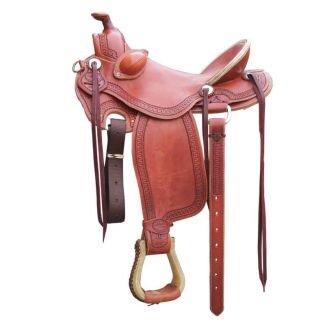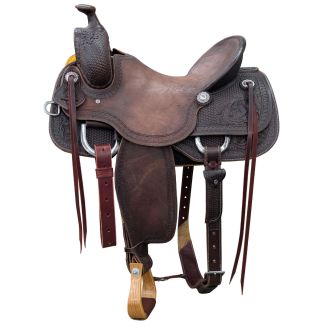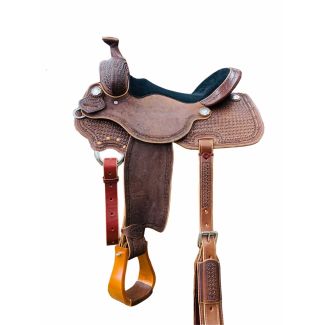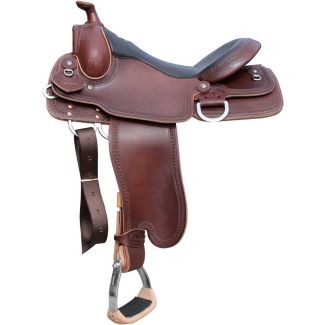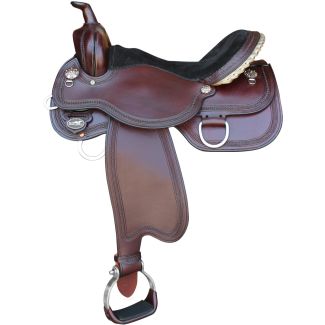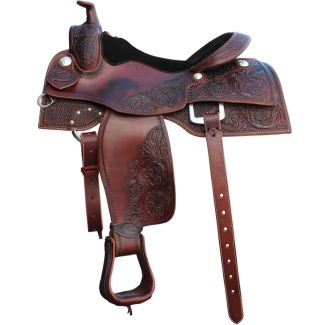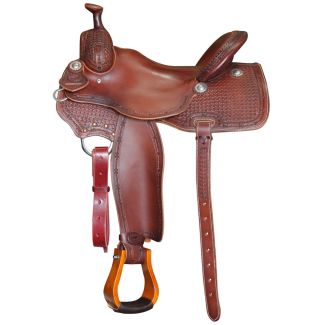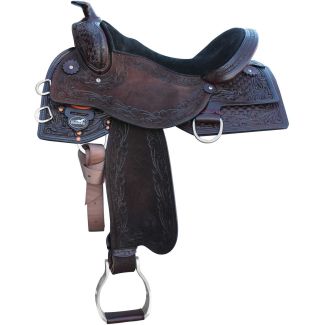Roping & Ranch Saddles
Roping saddles, also known as ranch saddles or working saddles, are specifically designed for cowboys and cowgirls who work on ranches and participate in roping activities such as team roping and calf roping. These saddles are built to withstand the demands of roping and provide the rider with stability and security while handling livestock.
Here are some features commonly found in roping and ranch saddles:
1. Strong Tree: Roping saddles have a strong and sturdy tree made of wood or fiberglass that supports the rider's weight and distributes it evenly across the horse's back. The tree is usually reinforced with rawhide or metal for added durability.
2. Horn: Roping saddles have a tall and thick horn located at the front of the saddle. This horn serves as a handle for the rider to secure the rope during roping events. The horn is designed to withstand the pressure and pulling force exerted while roping cattle.
3. Wider Swells and Cantle: Roping saddles have wider swells (the part where the rider's legs rest) and a higher cantle (the back of the saddle) compared to other types of saddles. This design provides the rider with a secure seat and prevents them from being thrown off balance while roping.
4. Deep Seat: Roping saddles typically have a deep, padded seat that helps the rider stay centered and balanced while working with livestock. The deep seat also provides added security and comfort during long hours of riding.
5. Heavy-Duty Rigging: Roping saddles usually feature a double rigging system, which includes a front and a back cinch. This design ensures the saddle stays securely on the horse's back, even under the strain of roping activities.
6. Leather and Tooling: Roping saddles are often made with high-quality leather, which is durable and can withstand the harsh conditions of ranch work. Some saddles may also feature decorative tooling or stamping that adds a touch of craftsmanship and individuality to the saddle.
Overall, roping and ranch saddles are designed to be practical, comfortable, and functional for working cowboys and cowgirls. They provide the rider with the necessary tools and support to effectively handle and rope cattle while working on a ranch.

